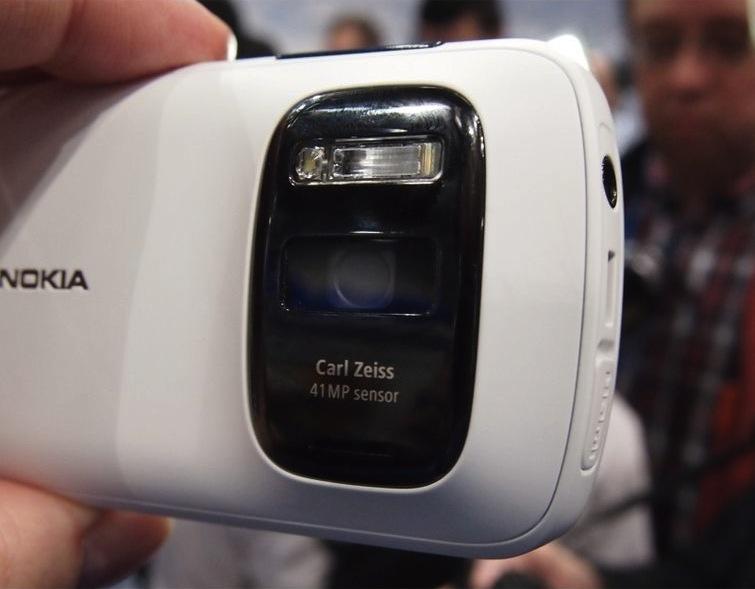
Mobile cameras are getting better with each iteration of smartphones. Ever since Apple's iPhone 4 was dubbed the most popular camera used on Flickr and Nokia started showing us that smartphone cameras didn't just have to be mediocre, the desire for better cameras has been at an unprecedented high.
Now OEMs are fixing bigger and better image sensors into their smartphones and basic point and shoot cameras are a few steps closer to being thrust into irrelevancy forever.
Just last week at Mobile World Congress, HTC kick-started the show by revealing their new One line of phones, ImageSense. HTC has equipped all of their new smartphones with a f/2.0 aperture and 28mm lens, BSI sensor, HTC ImageChip and smart LED flash. And best of all, they've dramatically cut down the time it takes to open the camera app, auto focus and snap a picture to under one second. And, by holding the shutter button, you can continuously capture virtually endless shots. HTC also added the ability to capture still images while you record video, too. They've improved all aspects of the hardware and better integrated the software to create a fantastic mobile camera experience.
(I'll be reserving my full opinion of ImageSense until after I get some hands-on time with a One X.)
But HTC wasn't the only one who came out swinging in Barcelona. Leading up to MWC, Nokia teased us with a view of PureView, their new imaging technology. After the show was started, though, they revealed one of the most interesting devices of the whole show, which was surprisingly powered by Symbian, the PureView 808. This phone packs a whopping 41-megapixel sensor with Carl Zeiss optics, easily making it the most lustrous smartphone camera around. PureView Pro imaging touts 3x lossless zoom for stills and 4x for 1080p HD video, fast shutter speeds, a new zoom concept called Slide Zoom, a long focal length and a lot of other features that will only matter to gurus. (For more on Nokia's PureView technology, read the whitepaper here.)
Now, the downside is that the PureView 808 is a Symbian phone, which means it will likely never make it to the States (at least officially). And even if it did I'm not sure I would want to welcome Symbian as my primary mobile platform. The good news is that in an interview with Finnish newspaper Aamulehti, Nokia's Jo Harlow clarified that the PureView technology would be making its way to Nokia's Windows Phone-powered Lumia devices.
Some of you are probably thinking that this is over the top. Maybe it is. But it's impressive, to say the least. And it has me drooling over the sample pictures and scoffing at how disappointing the Galaxy Nexus camera is.
I'm no professional photographer. Far from it, actually. But I am a sucker for a nice camera, especially if that nice camera comes fixed to the backside of a phone. And, oddly enough, image sensors may be the determining factor in my next phone purchase. I've been eyeing everything Nokia is doing of late, and if their next Lumia device comes with both Windows Phone 8 and PureView technology, it may be too hard to resist.

Then again, PureView technology doesn't come without a couple flaws of its own. With optical zoom capabilities and such a large sensor, all of the components can't be crammed into a typical, super thin casing like the existing Lumias. The PureView 808 has a rather large camera hump on top of an already chunky device. If Nokia can slim this bit down before their next Lumia, I may be forced to at least give it a spin. If not, I may succumb to HTC and buy a One X. I'll just have to settle for a more typical shooter rather than a 41-megapixel monster of a phone.
I won't lie. I kind of scoffed at Microsoft's claims of making Windows Phone "the best camera you will ever own." I knew that with Nokia on their side, that camera technology would come naturally. But I never saw something as impressive as PureView happening this soon. I think it caught pretty much everyone off guard.
PureView and ImageSense make extremely excited for what will come of mobile camera technology next. Rumors have spread about Steve Jobs talking with the guys from Lytro about shrinking the technology even more prior to his death. And manufacturers seem adamant on fitting their phones with the best cameras possible.
One way or another, my next phone will have a fantastic camera, rest assured.
Anyway, tell me what you think, readers. Does PureView technology have you looking in the Windows Phone direction? Or are you more interested in the more subtle approach with ImageSense? Will you be holding out on the hopes the iPhone 5 will have the best camera later this year? Sound off in the comments below!
Image via Expert Reviews